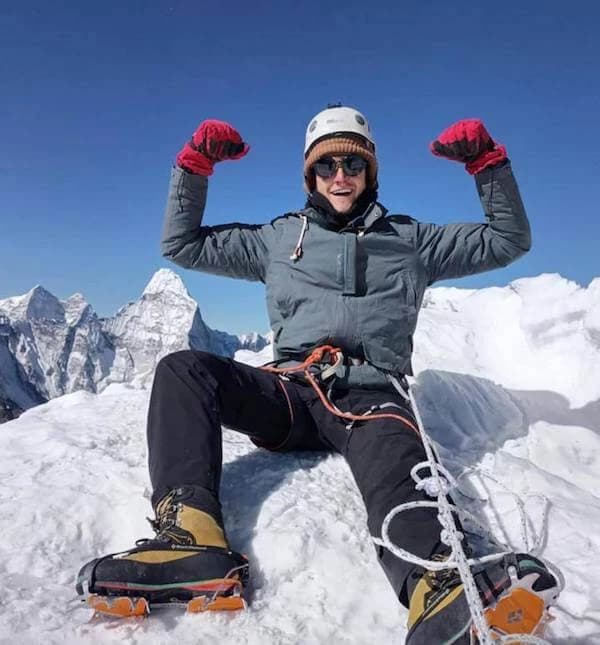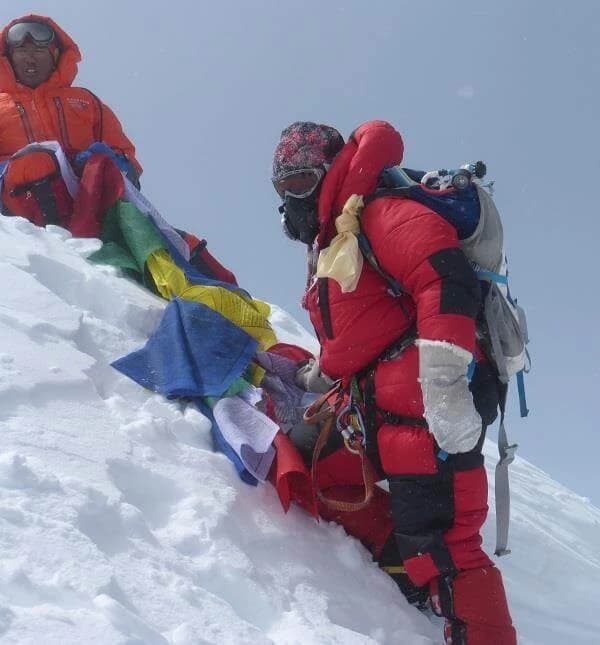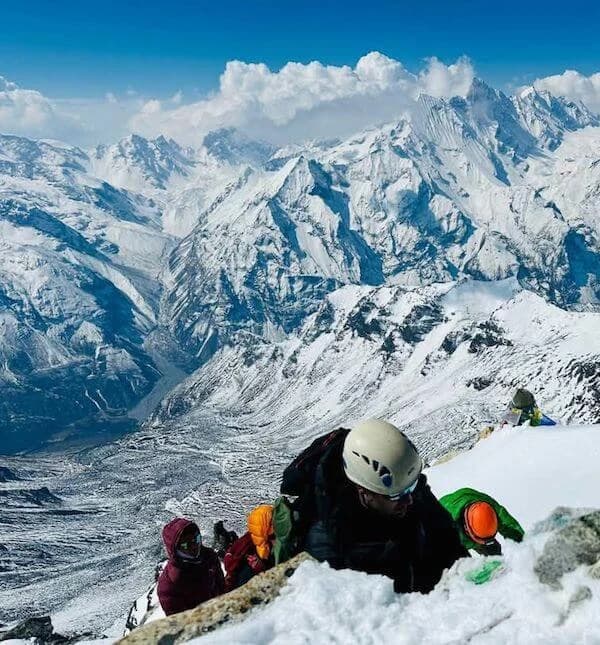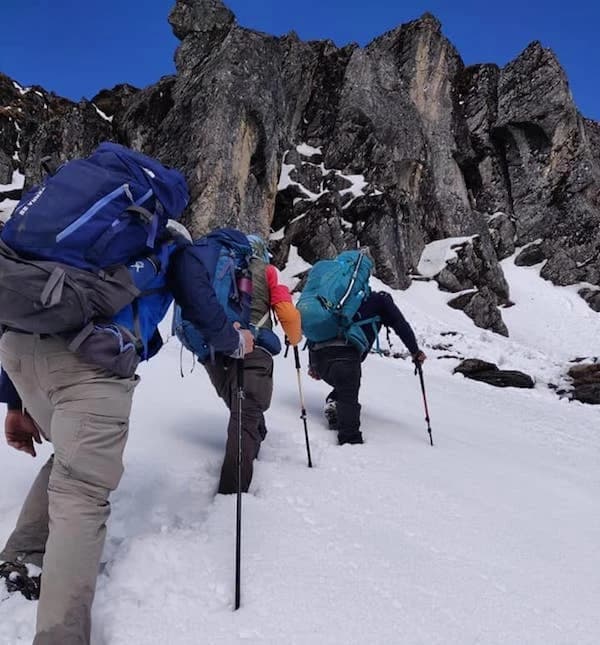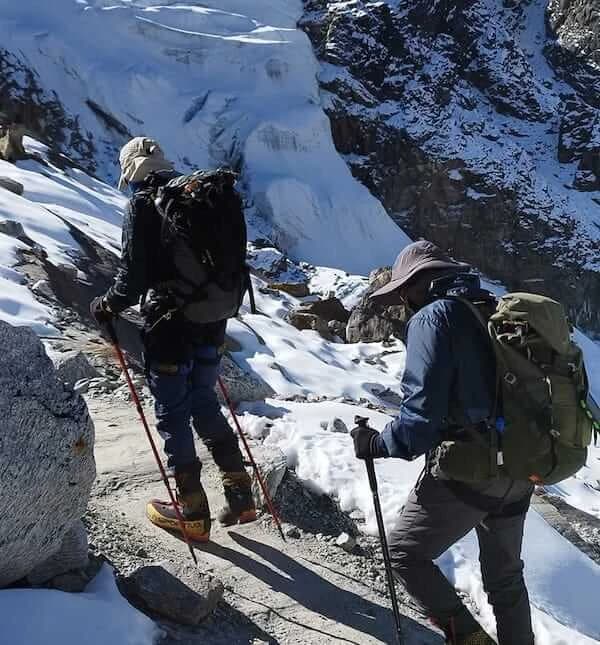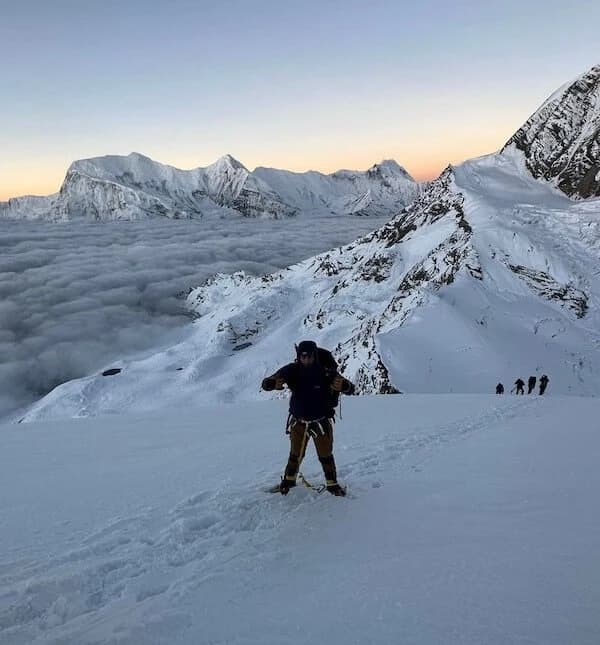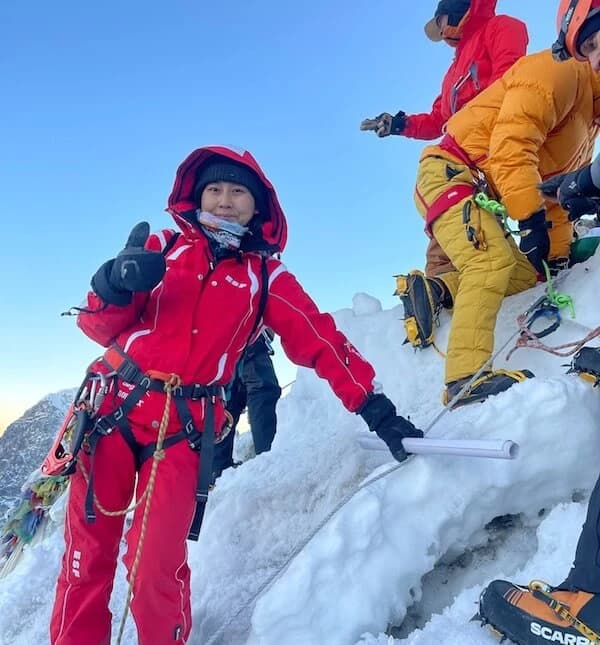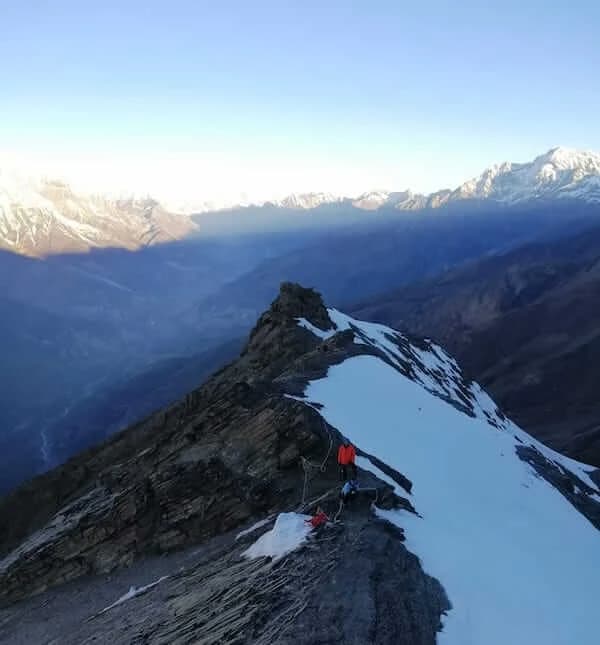Peak climbing in Nepal is a thrilling adventure activity that involves summiting Himalayan peaks below 7,000m, with 326 peaks officially open for climbing, categorized into Groups A and B by the Nepal Mountaineering Association (NMA). Popular peaks like Island Peak (6,189m), Mera Peak (6,476m), and Lobuche West (6,135m) offer breathtaking views but require varying levels of technical skill and physical fitness. Costs vary by season and peak difficulty, with spring being the best time for climbing. Proper training, acclimatization, and gear—such as crampons, ice axes, and ropes—are essential for success. The experience provides unforgettable memories, stunning mountain vistas, and a sense of achievement, supported by professional guides and rescue services for safety.
Peak Climbing in Nepal
Peak climbing in Nepal has been a top-listed activity for thousands of tourists every year since the advent of Nepalese tourism. Peak climbing simply means to be on top of one of the peaks below 7,000m elevation. Nepal records a sum total of 1,310 peaks above 6,000m of elevation. Among 14 eight-thousanders in the world, 8 including the tallest peak, Mount Everest are in Nepal. Therefore, peak climbing in Nepal has been one of the most adventurous sport activities acclaimed by the international and domestic tourists.
Government of Nepal has opened 326 peaks including 175 peaks to mark Mount Everest Golden Jubilee Celebrations, for peak climbing in Nepal. Nowadays, Nepal Mountaineering Association under Ministry of Culture, Tourism and Civil Aviation, issues peak climbing in Nepal permits. For the convenience, Nepal Mountaineering Association has categorized these peaks into three groups: A and B respectively. And the peaks between the elevation of 5,587m and 6500m are defined as the ‘trekking peaks’ which can be mounted easily.
Peak climbing in Nepal cost is different for all three groups of peaks and it is charged individually on equal bases. But, in the past, peak climbing in Nepal cost used to be charged groupwise that means, ‘larger the group; cheaper the price!’ Out of the peaks opened for climbing, some are easy; others moderate and rest of them are quite strenuous to succeed. Nepal Peak climbing gears and training including acclimatization are different for all three types of peaks. The best time for peak climbing in Nepal is Spring Season because of less snow deposited due to warm temperature.
As peak climbing in Nepal is a challenging task, you need to be physically fit and trained as per the requirement. If you are trained with the local Sherpa guides or some mountaineering and rock climbing institutions, you can measure the height easily. Without training and acclimatization, peak climbing in Nepal may remain just a dream; not ‘a dream come true!’ The sense of victory gained after peak climbing in Nepal is really the most memorable lifetime achievement for every climber. You can do some researches regarding peak climbing in Nepal for your thorough knowledge so that you can accomplish the feat.
What is peak climbing?
Generally, peak climbing refers reaching the top of any peak below 7,000m (22,966ft) above the sea level in the Himalayas. There are 326 peaks opened for climbing in Nepal and these are also known as “trekking peaks of Nepal”. To get victory over the top of these peaks, you need to be fit physically and mentally as well. Among these peaks, some require training and special equipments as they are quite technical whereas some don’t need specialized skills. Peak climbing is quite different from expedition to the world’s tallest peaks like Mount Everest, Mount Kanchenjunga, etc.
You can experience of peak climbing while on trekking to major Himalayan regions like Everest region, Annapurna region and Langtang region. Peak climbing in Nepal enriches your lifelong memories as you mount on the summit of the trekking peaks of Nepal. Just imagine the mesmerizing view of Mount Everest and other snowcapped peaks around that you can have only after peak climbing! Nothing can surpass the witness of the spectacular view you get from the summit of such moderate as well as technical peaks.
The main objective of this article is to provide you detailed information about the top list of peak climbing in Nepal. Therefore, you can choose the most appropriate trekking peak with enough preparation of training and peak climbing gears. This article also intends to facilitate you to find the best budget peak climbing package through our trekking agency. The most famous trekking peaks in Nepal are the following:
Island Peak Climbing:
With the height 6,189m (20,305ft) at the heart of Khumbu region, Island Peak climbing is the first choice of the trekkers. Called ‘Ima Tse’ in the local dialect, Island Peak lies between Mt. Ama Dablam and Mt. Lhotse erected like an island. Situated on the top of Chhukung Glacier, Island Peak climbing can be done experienced during Everest Base Camp Trekking. From the top of Island Peak, you see the glimpse of the snowcapped peaks like Mt. Everest, Mt. Makalu, Mt. Nuptse. The 360-degree panoramic view of the snowy peaks in the Khumbu region is the most valuable reward of Island Peak climbing.
Mera Peak Climbing:
The highest trekking peak of Nepal with an altitude of 6,476m (21,246ft), Mera Peak climbing lies in the Everest region. Mera Peak climbing is another choice of the adventure lovers who want to have a magnificent outlook of the Khumbu region. Out of three summits: Mera North, Mera Central and Mera South respectively, Mera Peak climbing refers to Mera Central. You see the picturesque appearance of Mt. Everest, Mt. Makalu, Mt. Lhotse, Mt. Cho Oyu and Mt. Kanchenjunga from Mera Peak. The best seasons for Mera Peak climbing are spring and autumn because in other seasons you encounter with bad weather.
Lobuche West Peak Climbing:
Unlike Island Peak and Mera Peak, Lobuche West Peak climbing requires enough technical skills as it is quite challenging. From Gokyo Lakes, you have to cross Cho La Pass (17,782ft) to reach Lobuche Base Camp for Lubuche West Peak climbing. From Lobuche Base Camp, the awesome sight of Mt. Ama Dablam, Mt. Cholatse, Mt. Thamaserku and Tawache Peaks really pleases you. Lobuche West Peak climbing takes you to 20,075ft elevation to witness the enthralling view of the snow-white peaks of the Khumbu region.
Pisang Peak Climbing:
Pisang Peak climbing takes you to the most appraised Annpurna region which receives almost one third of the trekkers visiting Nepal. Pisang Peak climbing requires moderate mountaineering skills as it is a bit more challenging adventure in the Annapurna Circuit trail. You have to cross Thorung La Pass (5,416m), one of the world’s highest passes to reach the summit of Pisang Peak. Having the elevation 6,0911m (19,984ft), Pisang Peak climbing facilitates you with the mind-blowing view of the Annapurna Massif and other neighbouring peaks. Additional attraction of Pisang Peak climbing is the captivating sight of Himlung Himal, Gangapurna Himal and trans-Himalayan plateau attached to Tibet.
Chulu East Peak Climbing:
Chulu East Peak Climbing takes you to the zenith of a part of Manang Himal erected right from Manang Valley. Chulu East Peak (6,584m) is said to be the most beautiful peak in Annapurna region calling hundreds of climbers every year. Chulu East Peak climbing is one of the top-most choices of the climbers and mountaineers for the beautiful mountains and landscapes. The marvelous view of Annapurna Massif, Dhaulagiri range, Tilicho Peak including Mt. Manaslu is the prize of Chulu East Peak climbing. However, Chulu East Peak climbing is a challenging task requiring technical skills to handle the peak climbing tools for the beginners.
Nepal Mountaineering Association (NAM) has opened dozens of other peaks for the peak climbing lovers in Nepal for the nation’s economic growth. Some of the most popular are Yala Peak Climbing, Dhampus Peak Climbing, Pharchamo Peak Climbing and Mt. Ama Dablam Climbing. NMA has fixed peak service charge for the foreign climbers and Nepali climbers simultaneously according to the season and trekking peaks in Nepal. NMA peak service charge is higher in spring season as it is the best season for peak climbing in Nepal. Similarly, peak service charge is lower in autumn season than in spring season as it is less favourable season than spring. The peak service charge in winter and summer is same for the peak climbers as these seasons are not as appropriate as spring and autumn for peak climbing in Nepal.
The detailed NMA peak service charge list is attached below for your further perusal:
Service Charges for Foreign Climber per person in US dollar
|
Group A |
Spring |
Autumn |
Winter |
Summer |
|||
|
S.N. |
Name of Peak |
Region |
Height |
Mar-May |
Sep-Nov |
Dec-Feb |
Jun-Aug |
|
1 |
Mt. Cholatse |
Khumbu |
6423m |
USD250 |
USD125 |
USD70 |
USD70 |
|
2 |
Mt. Kyazo Ri |
Mahalangur |
6151m |
USD250 |
USD125 |
USD70 |
USD70 |
|
3 |
Mt. Phari Lapcha |
Mahalangur |
6017m |
USD250 |
USD125 |
USD70 |
USD70 |
|
4 |
Mt. Nirekha |
Mahalangur |
6159m |
USD250 |
USD125 |
USD70 |
USD70 |
|
5 |
Mt. Langsisa Ri |
Jugal |
6412m |
USD250 |
USD125 |
USD70 |
USD70 |
|
6 |
Mt. Ombigaichen |
Mahalangur |
6340m |
USD250 |
USD125 |
USD70 |
USD70 |
|
7 |
Mt. Bokta |
Kanchenjunga |
6114m |
USD250 |
USD125 |
USD70 |
USD70 |
|
8 |
Mt. Chekigo |
Gaurishankar |
6121m |
USD250 |
USD125 |
USD70 |
USD70 |
|
9 |
Mt. Lubuje West |
Khumbu |
6135m |
USD250 |
USD125 |
USD70 |
USD70 |
|
10 |
Mt. Larkya Peak |
Manaslu |
6416m |
USD250 |
USD125 |
USD70 |
USD70 |
|
11 |
Mt. ABI |
Mahalangur |
6043m |
USD250 |
USD125 |
USD70 |
USD70 |
|
12 |
Mt. Yubra Himal |
Langtang Himal |
6048m |
USD250 |
USD125 |
USD70 |
USD70 |
|
Group B |
Spring |
Autumn |
Winter |
Summer |
|||
|
S.N. |
Name of Peak |
Region |
Height |
Mar-May |
Sep-Nov |
Dec-Feb |
Jun-Aug |
|
1 |
Hiunchuli |
Annapurna Himal |
6434m |
USD250 |
USD125 |
USD70 |
USD70 |
|
2 |
Singu Chuli (Fluted Peak) |
Annapurna Himal |
6501m |
USD400 |
USD200 |
USD100 |
USD100 |
|
3 |
Mera Peak |
Khumbu Himal |
6470m |
USD250 |
USD125 |
USD70 |
USD70 |
|
4 |
Kusum Kangru |
Khumbu Himal |
6360m |
USD250 |
USD125 |
USD70 |
USD70 |
|
5 |
Kwangde |
Khumbu Himal |
6086m |
USD250 |
USD125 |
USD70 |
USD70 |
|
6 |
Chulu West |
Manang District |
6419m |
USD250 |
USD125 |
USD70 |
USD70 |
|
7 |
Chulu East |
Manang District |
6584m |
USD400 |
USD200 |
USD100 |
USD100 |
|
8 |
Imja Tse (Island Peak) |
Khumbu Himal |
6165m |
USD250 |
USD125 |
USD70 |
USD70 |
|
9 |
Pharchamo |
Rolwaling Himal |
6279m |
USD250 |
USD125 |
USD70 |
USD70 |
|
10 |
Lobuje |
Khumbu Himal |
6090m |
USD250 |
USD125 |
USD70 |
USD70 |
|
11 |
Ramdung |
Rolwaling Himal |
5900m |
USD250 |
USD125 |
USD70 |
USD70 |
|
12 |
Pisang Peak |
Manang District |
6091m |
USD250 |
USD125 |
USD70 |
USD70 |
|
13 |
Khongma Tse (Mehra Peak) |
Khumbu Himal |
5849m |
USD250 |
USD125 |
USD70 |
USD70 |
|
14 |
Ganja La Chuli (Naya Kanga) |
Langtang Himal |
5863m |
USD250 |
USD125 |
USD70 |
USD70 |
|
15 |
Paldor Peak |
Langtang Himal |
5903m |
USD250 |
USD125 |
USD70 |
USD70 |
(Source: https://nepalmountaineering.org)
As per the decision of secretary level dated 2071/1/16, the insurance amount for sardar, mountain guide and high altitude walker fund is fixed as Rs 15 lakhs. Similarly,
- insurance is fixed as Rs 4 lakhs. Mountain Heli-rescue of 10000USD is also required.
Note: Maximum number of members in a team is 15.
Garbage deposit to acquire climbing permit will be same i.e. USD 500.00. The refund shall be made as per the provisions of NMA.
(Source: https://www.nepalmountaineering.org)
FAQs:
1. Can everyone climb the peak?
No, they can’t. The persons who are physically and mentally fit can easily climb the peaks opened for climbing. However, there are some cases when physically challenged people have also set incredible records in peak climbing in Nepal.
2. What is the advantage of peak climbing?
Self satisfaction is the most invaluable asset in one’s life after all! Peak climbing in Nepal gives a lifelong memory that you can share with your people in future as well. Besides, you can create a history by breaking the established records in peak climbing.
3.What kind of view can I have from top of the peak?
In fact, the picturesque sight of the snow-capped mountains and the beautiful terrain is the most rewarding aspect of peak climbing. However, the view that you see from the top of the peak depends upon the region you have been. For example, if you are on Island Peak climbing, you can see the 360-degree panoramic view of the mountain giants in the Khumbu region. Similarly, if you on Pisang Peak climbing, you can see the Annapurna Range, Dhaulagiri Range and other peaks including the trans-Himalayan plateau.
4. Do I need a special course for peak climbing?
It is not mandatory that you need special course or training for every peak climbing in Nepal. The night before you start peak climbing, your guide will give you overall instructions about the course. Take special training from Sherpa guides or some mountaineering and peak climbing institutions to get victory over the technically challenging peaks like Ama Dablam, Himlung Himal, etc.
5. What are the gears I need to climb the peak?
The following are peak climbing gears required for successful peak climbing in Nepal:
|
Fixed Rope |
Climbing Rope |
Tent |
Crampons |
|
|
Altimeter Watch |
Ice Axe |
Sleeping Bag |
Waterproof Trousers |
|
|
Gas Stove |
Gas Fuel |
Ascender (Jumar) |
Mattress |
|
|
Large Thermos |
Carabiner |
Tape Slings |
Harness |
|
|
Helmets |
Ice Screw |
Belay Gloves |
Ski Goggles |
|
|
Headlamps |
Trekking Poles/ Ski Poles |
Snow Shovel |
||
|
Water Bottle |
Oxygen cylinder |
Mountaineering Jackets |
||
|
Cooking Pots and Equipment |
Mountaineering/ Climbing Boots |
|||
|
Climbing Backpacks |
Figure 8/ Descender |
|||
6. Do I need a special climbing guide and porter for peak climbing?
Yes, of course, you need a very skillful guide and well equipped porter who can help you to accomplish peak climbing in Nepal. The guide and porter having all kinds of insurance are very much reliable and helpful to achieve your project.
7. How costly is it to climb peak?
Peak climbing in Nepal cost differs from one peak to another and one season to another. Peak climbing in Nepal cost is highest in spring season as it is the best season for peak climbing. Similarly, the cost is quite medium in autumn whereas it is really best reasonable in summer and winter. For the detailed peak climbing in Nepal cost, you can contact our trekking agency.
8. Do I get altitude sickness while peak climbing? Do I need any medicine to prevent it?
There is high possibility of altitude sickness when you reach the elevation above 10,000ft in the Himalayan region. However, you can prevent altitude sickness by using some measures like drinking enough water and hot soup, ascending slowly, etc. If you want to take some medicines to prevent and cure altitude sickness, don’t forget to bag Ibuprofen, Acetazolamide and Diamox Oral.
9. What are the rescue services found for any problems during peak climbing?
If you happen to have any problems during peak climbing in Nepal, there are many rescue services as per your circumstances. If you have normal problems sprain or fracture, you will be rescued by horses or mules. If a climber is near to death, helicopter rescue is the ultimate option to carry you to hospital promptly.
10. How can I make all the required documents for peak climbing?
Don’t worry about the required documents for peak climbing as the trekking agency you have book through will help you. For your kind information, Nepal peak climbing permits are issued by NMA and conservation area permits from the respective region. Similarly, TIMS cards are available in Trekking Agencies’ Association of Nepal (TAAN) and Nepal Tourism Board (NTB) issues other legal documents.
11. How can I find the best peak climbing agency in Nepal?
To find the best peak climbing agency in Nepal, you can do a thorough research on the internet from your hometown. Check through their licenses from Government of Nepal, their experiences and professional strength including the expert teams in the agency. Among the best trekking agencies in Nepal, Orbit Alpine Adventure is one run by a professional team in peak climbing. For the customized peak climbing in Nepal package and other information, you can simply contact us via email or telephone.
